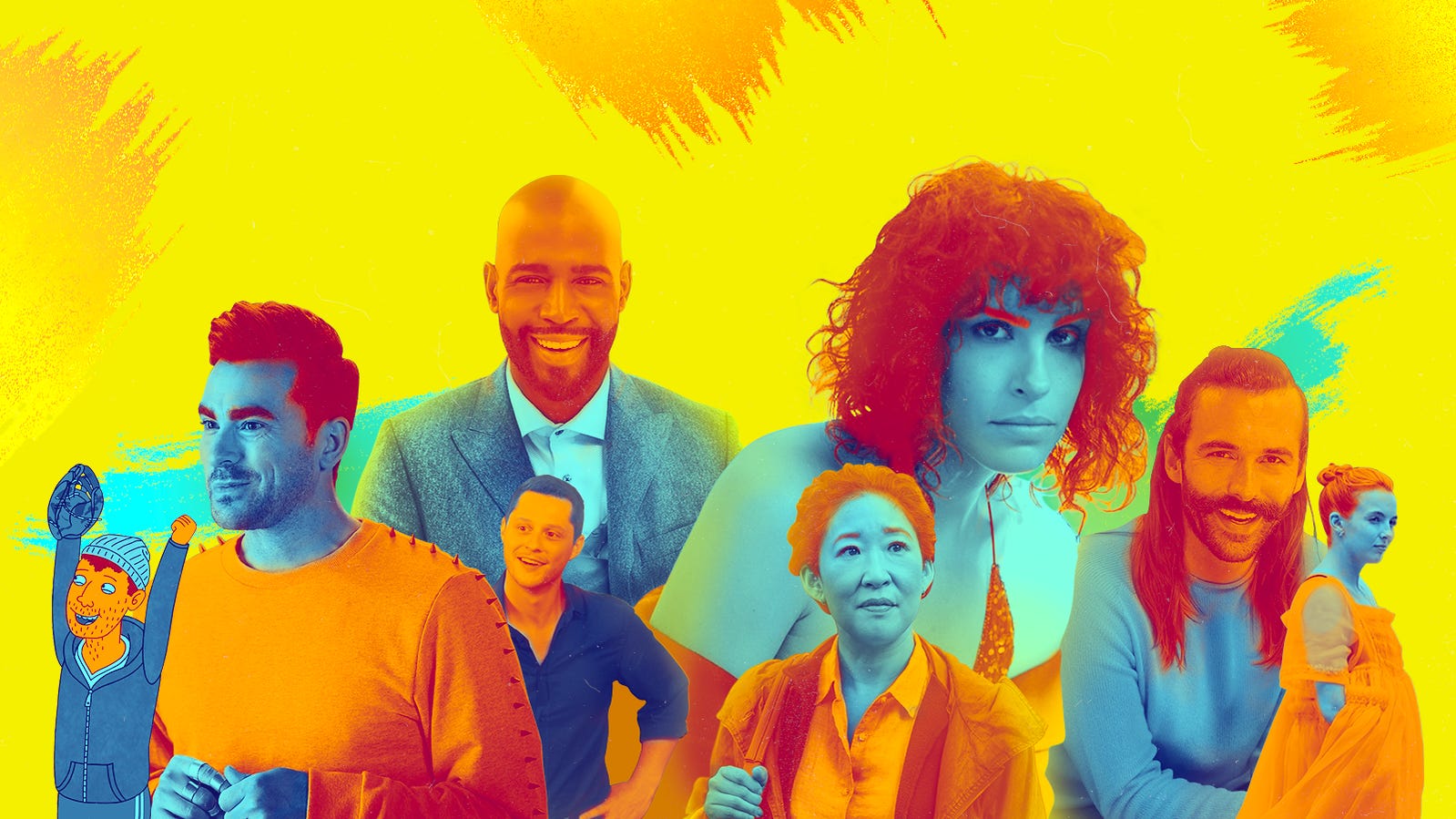
Celebrate Pride: TV Guide Takes a Deep Dive Into How TV Shaped Our Queer Journeys
From bloodthirsty lesbians of 'Killing Eve' to a fantastical fairy tale set in 'Schitt's Creek', we look at LGBTQ representation and storytelling on television
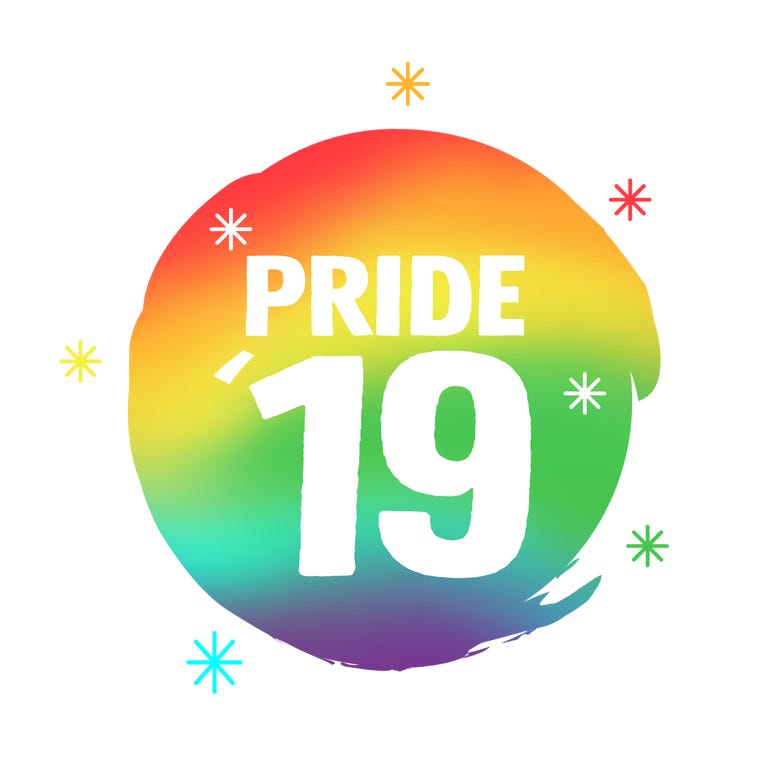
Dear Reader, we have gathered here today to celebrate the singular moment in every queer person's life when they fall in love-lust-obsession with a TV character only to wonder later: Do I want to be them, do I want to be their best friend, or do I want to date them? It's one of the few universal experiences that queer people -- an umbrella term for gender and sexual orientations outside of cisgendered heterosexuality -- have in common.
The universality of this experience is unsurprising when you consider how many people met queer folks on TV before they did in real life. Pop culture has always served as a blueprint, a model of who you could become if you were just a little braver, a little bolder, and lived in a less hateful world. That's an impossible lure to resist, and during TV Guide's Pride Week, we'll be diving into the complicated characters on TV who shaped a generation of queer people. From one queer man's obsession with Meredith Grey's resilience to an examination of Pose's authenticity, we'll be rolling out a slate of personal essays, reported pieces, and cultural criticism that highlight the millions different ways queer people find and reflect themselves on TV.
Check back here throughout the month for more updates, or simply tap on the Pride 2019 button (above) for more content.
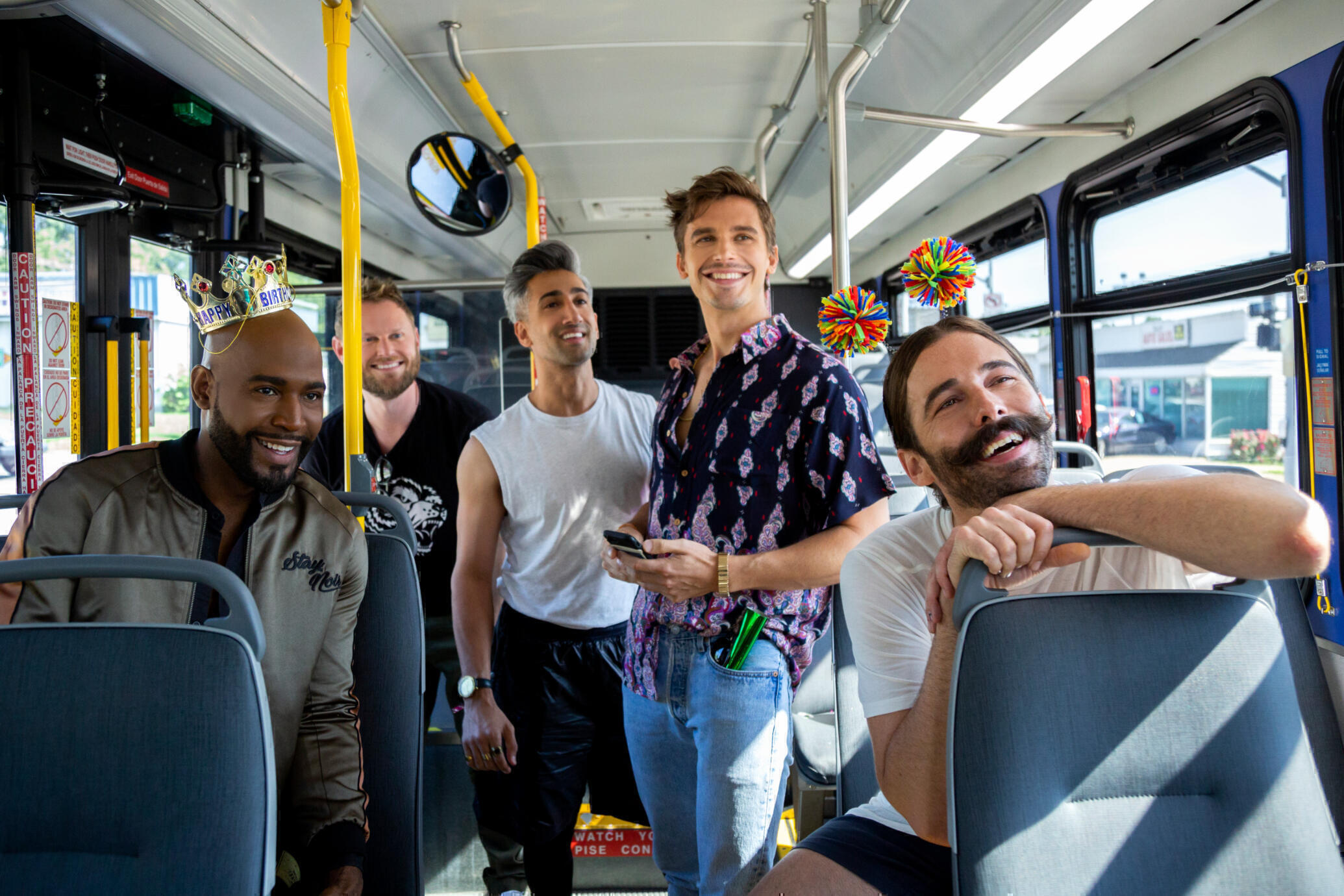
Finally, Queer Joy Is Infiltrating TV
In 2003, Degrassi: The Next Generationaired a two-part episode titled "Pride," in which high schooler Marco (Adamo Ruggiero) came out as gay to one of his friends. Viewers already knew about Marco's sexuality, but it remained a secret to the rest of the school, mostly because Marco feared their reactions. In "Pride," after an uncomfortable date, an overwhelmed Marco ends up spontaneously coming out to his friend Spinner (Shane Kippel), the school's bully, who doesn't exactly take the news well. Then, in the episode's second part, a group of homophobic men jump Marco, leaving him bleeding on the ground. Keep reading Pilot Viruet on how TV is finally moving beyond queer trama porn.
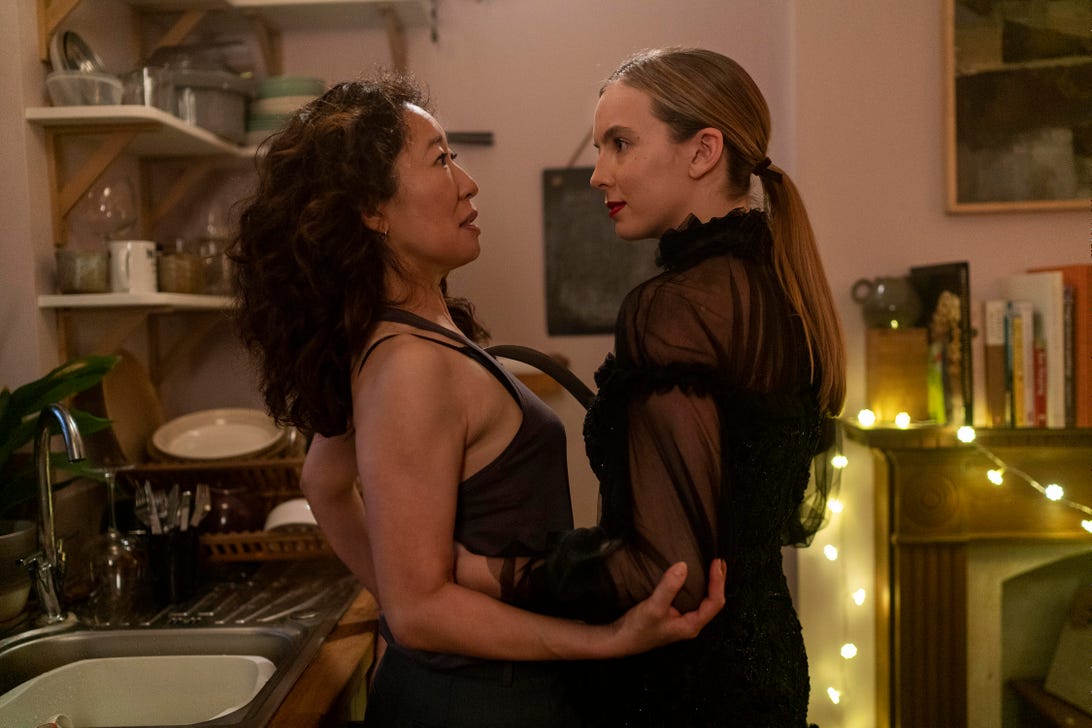
Killing Eve Reprises Buffy's Catastrophic Queer Desire
Twenty years after Faith swaggered into the Bronze, another queer girl with f---ed-up boundaries deigned to grace our screens, but this time the subtext has become the text. Jodie Comer's Villanelle onKilling Eve has some obvious parallels with her Slayer predecessor: a vague but traumatic past, legal difficulties, an older man telling her who to kill. Her fixation with Sandra Oh's Eve is every bit as destructive as Faith's with Buffy, but it's a great deal more honest. Faith makes a mess of her life, and everyone else's around her, because she can't admit she wants to be with Buffy; Villanelle makes a mess because it's worth it if she gets to be with Eve. (OK, and because she enjoys it.) They both have a nihilistic streak, but while Faith's is born of despair, Villanelle's is born of a twisted hope. Keep reading Lindsay King-Miller on how Killing Eve took Buffy's subtext and made it text.
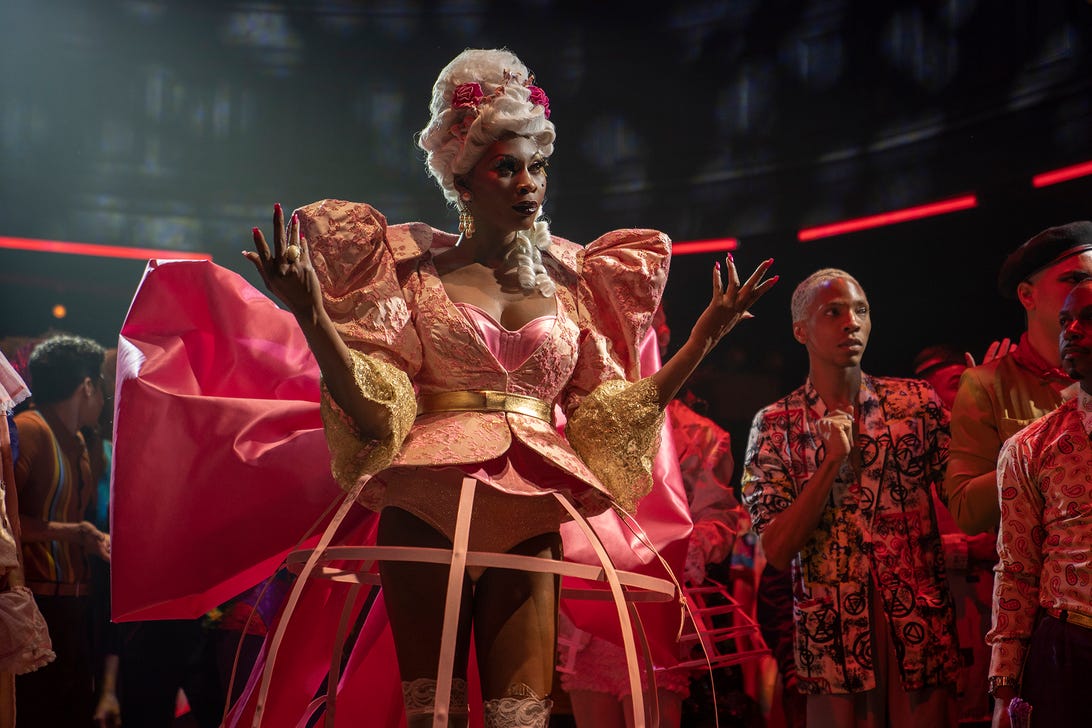
Pose Season 2 Asks: What Happens When Your Scene Goes Mainstream?
In its debut season, Pose filmed in locations all around New York, but for Season 2, the celebrated FX series officially set down roots in the Bronx -- a fitting development for the drama, since that's where co-creator Steven Canals is from and where the story's matriarch Blanca (Mj Rodriguez) provides a home to gay and trans youth rejected everywhere else. Pose's home, an industrial-looking warehouse studio the size of a shopping mall, may look bland on the outside one gloomy Friday in early May, but inside, the cavernous facility is practically overdosing on glamour as Rodriguez, Billy Porter, Indya Moore, and Dominique Jackson, along with hundreds of crew and extras, are hard at work filming a scene in the fabulous ballroom. In here, it's 1990 -- three years since Season 1's conclusion in 1987 -- and the vibe is electric, as extras in outrageous get-ups (one is dressed like an Italian clown, with a blond bang affixed to his bald black head) pass time waiting for direction, but upbeat exhaustion fills the air too. They've been shooting for months, conveying how Madonna's "Vogue" landed on the ballroom community like an atom bomb. With Sheila E.'s "A Love Bizarre" zinging through the speakers, they're shooting a pivotal scene over and over until producers on set, including maestro Ryan Murphy sense it's right. Keep reading Malcolm Venable, who went behind-the-scenes at Pose's new home in the Bronx and examined how success changes queer scenes.
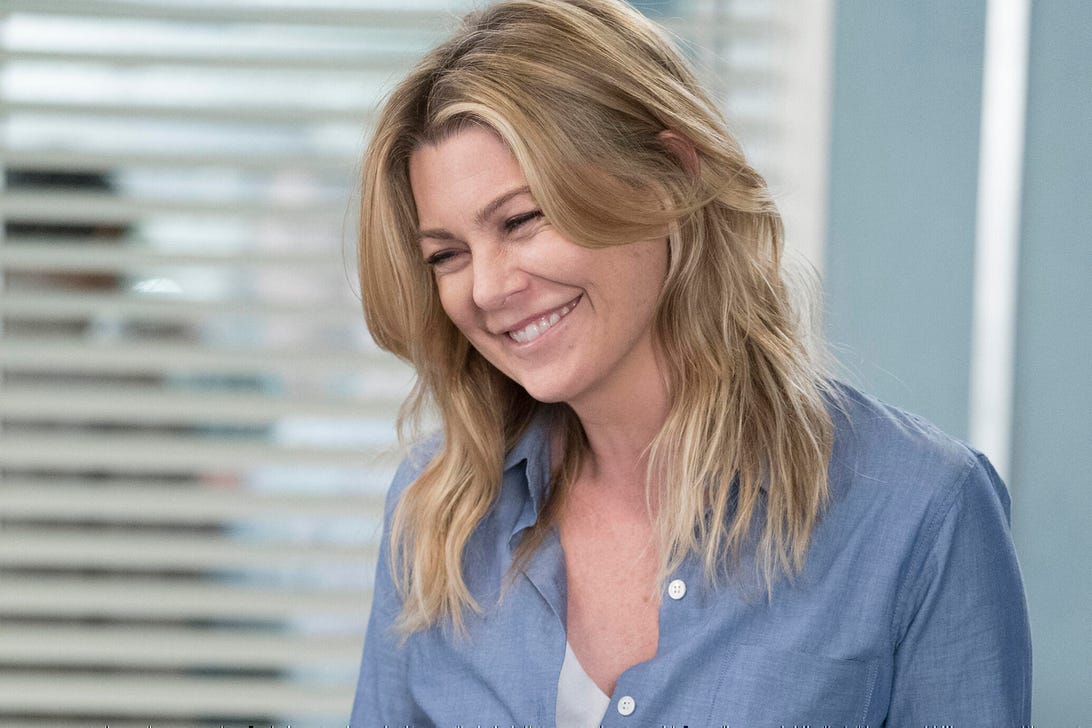
How Straight Fictional Women Shaped My Gay Identity
Unable and uninterested in relating to the limited range of masculinity on television, I turned to female characters. Meredith and Cristina's friendship reflected my own ease and effortlessness with the people closest to me. Their love for each other is rarely spoken out loud but is implicit in their dance parties and heart-to-hearts. They aren't held back by societal burdens. They are not bullied or called faggots or made to wear identifiers that they didn't choose. On top of being the narrative center of the show, they embrace competition and rarely question if they belong to the world or not. Though medical surgery was not likely an option for my own career, I felt more connected to the nuance in their lives and the catharsis from the dramatic proclamations of love in scrub rooms and back-door relationship gossip than I did anywhere else in my media consumption (I was too closeted to watch gay blockbusters like Brokeback Mountain, and I'm not mad I still haven't seen it). Through their quirks and misgivings, their friendship always allowed them the space to be fully realized people. These women could transcend their failures and what other people thought of them, and I wanted a piece of that journey for myself.Keep reading Michel Ghanem's exploration into how fictional women shaped his queer identity.
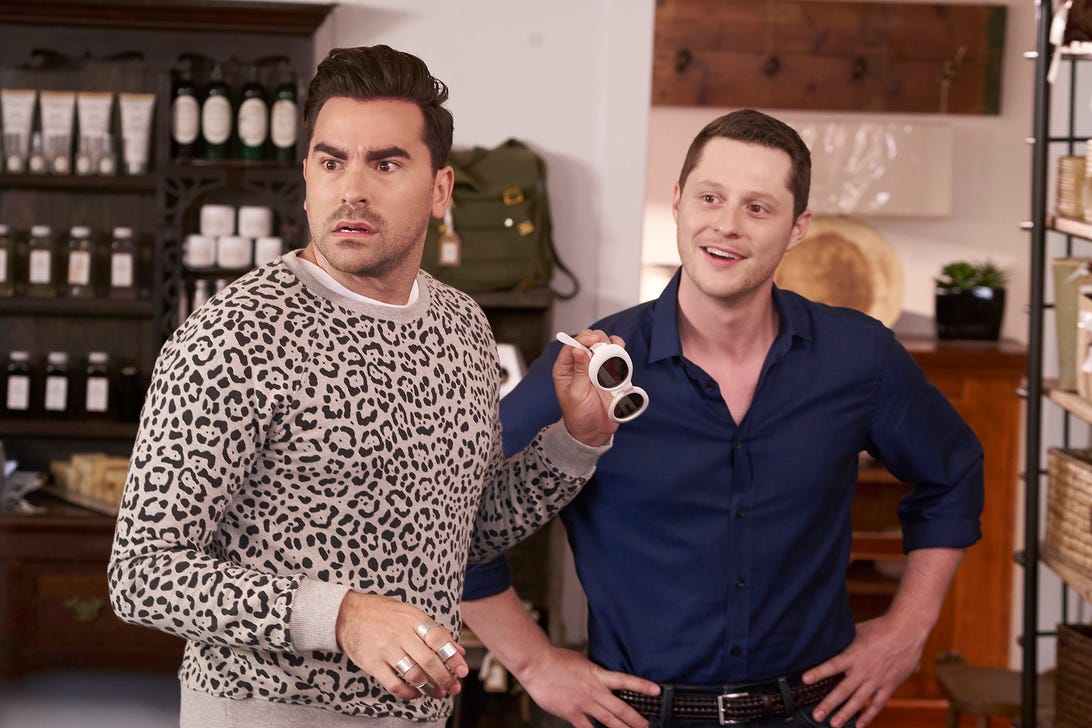
Schitt's Creek Captures the Unexpected Joy of Being Seen
Schitt's Creek approaches vulnerability from a queer sensibility, even as it applies that sensibility to every character. Every emotion around acceptance is heightened because it's treated as less of a guarantee. After David kisses him for the first time, Patrick thanks him: "I've never done that before with a guy, and I was getting a little scared that I was gonna let you leave here without us having done that, so thank you for making that happen for us." There's an undercurrent of relief to their relationship, in a way that there generally doesn't need to be for straight couples. Both David and Patrick are on new ground -- Patrick because he's never dated a man before, David because all of his previous relationships have been flings with people who were unkind -- but their relationship isn't so much a giddy crush as it is a comfortable exhale. Keep reading Kelly Connolly on how eliminating homophobia in the world of Schitt's Creek has let the show thrive in unexpected ways.
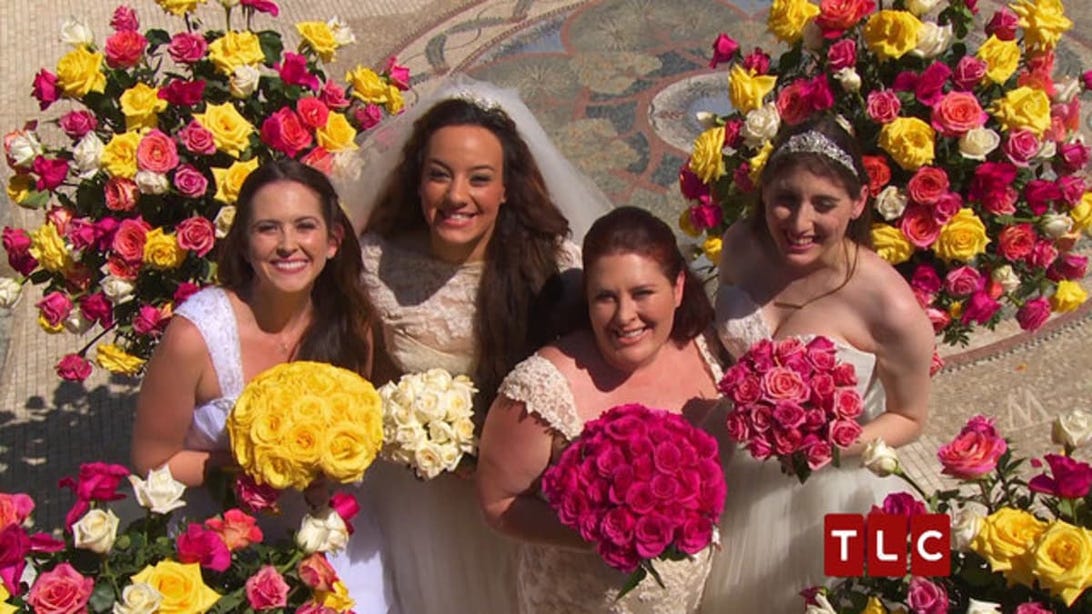
Four Weddings and the Queer Pleasures of Straight Nuptials
Four Weddings distilled all the trappings of straight life into plug-and-play nuggets of thoughtless glee. There was no plot, only style. Suddenly under the scrutiny of discerning, competitive brides, the homogeneity of traditional heterosexual marriage began to fall apart in the most delightful way. It turns out that not all mason jar centerpieces look alike, and not all promises to be best friends forever sound the same. Four Weddings was the perfect reflection of a gay man whose suburban life felt like a constant safari of straightness; one that turned an oppressively normative surrounding into something that could be enjoyed, albeit ironically. Keep reading Logan Scherer on how Four Weddings changed the way he viewed relationships.
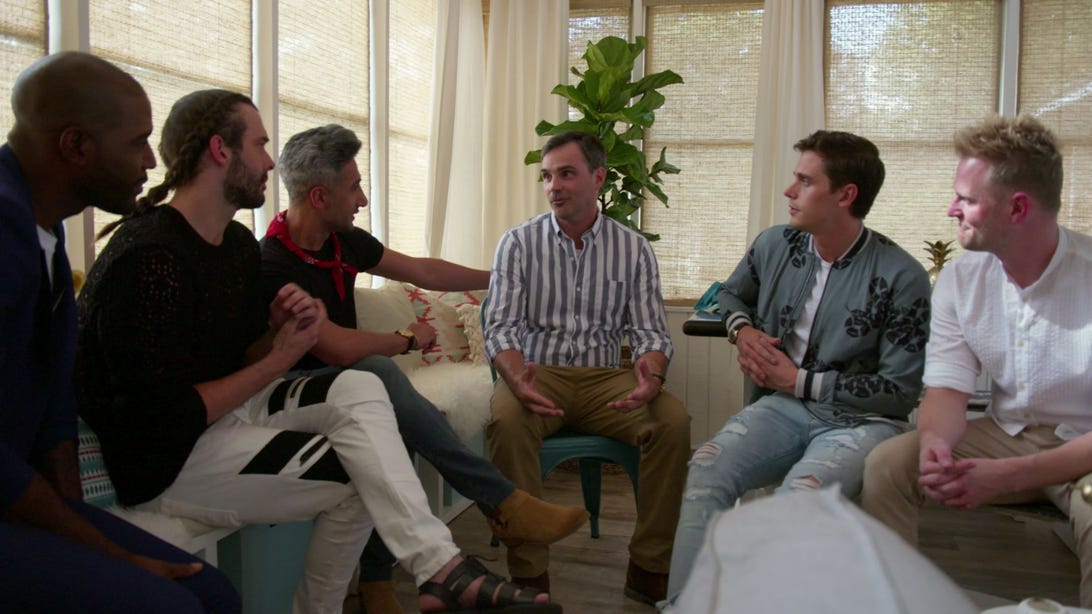
Here's What Your Favorite People from Queer Eye Are Up To Now
"Apparently a house styled by Bobby Berk has greatly improved value," said Bobby Camp. "We were a little shocked, but it was a blessing in disguise." The family has since moved to a roomy new house in the same neighborhood. Luckily, their new home also gets to show off Berk's hard work. "We took everything that wasn't nailed down and were able to incorporate a lot of Bobby's design in our new house. It also gave us an opportunity to open our house to having the kids' friends over more. We also discovered a world beyond ourselves that needs to hear a story about queer people and church people and love and compassion and forgiveness and grace." Keep reading Tatiana Tenreyro to find how all your Queer Eye faves are doing.
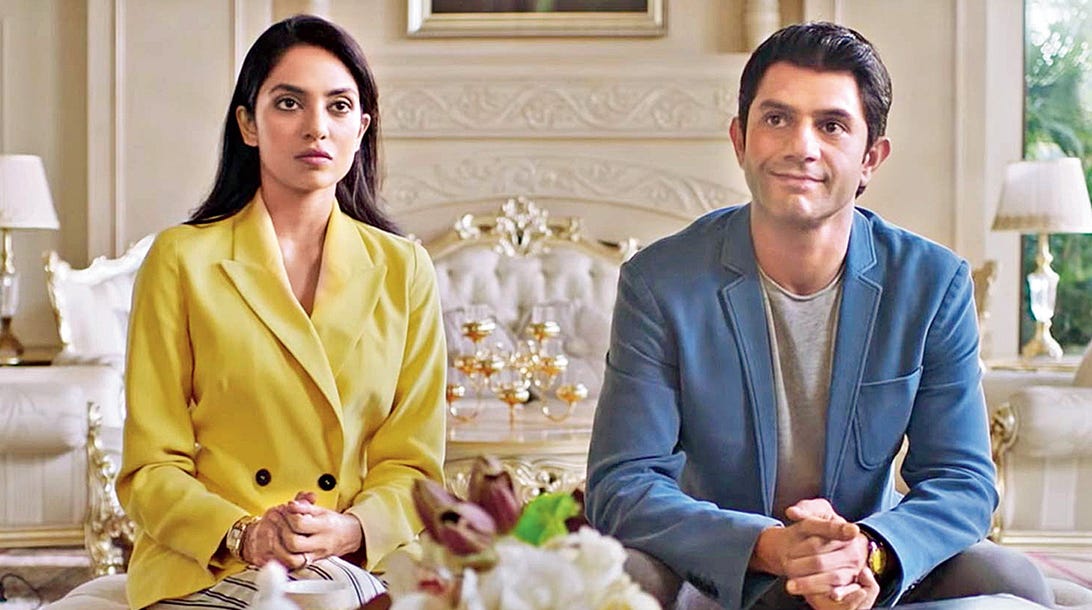
How Streaming Platforms Ushered in a Wave of Queer Representation in India
In a deeply religious country where homosexuality was illegal until 2018, India's censorship body frequently intrudes on the creative freedom of filmmakers by simply refusing to certify films with progressive themes (or suggesting too many cuts), which meant they can't be distributed to theaters. Creators have little incentive to touch queer stories, even if they are queer themselves. With the proliferation of streaming services however, things are beginning to look different. As internet content providers, these platforms don't yet fall under the purview of India's censors and are free from its shackles. The unfettered freedom to operate on the internet has made queer content blossom everywhere. Keep reading Prathap Nair on the new wave of queer Indian content.
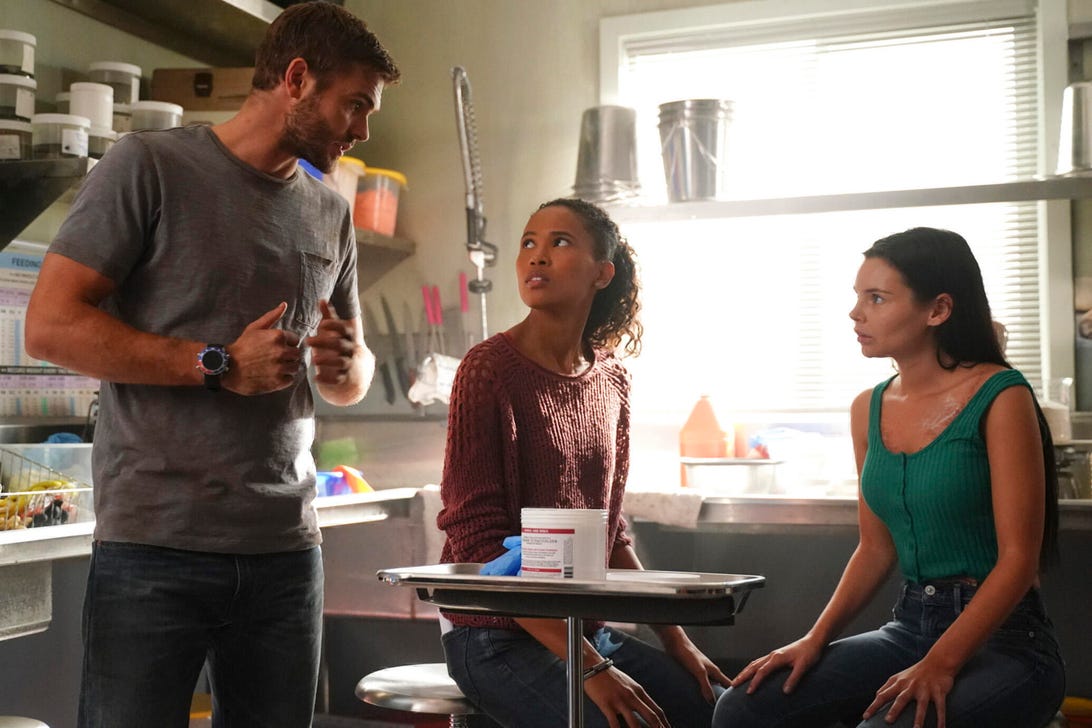
Elie Powell, Fola Evans-Akingbola, Alex Roe, Siren
David Bukach, FreeformSiren's Alex Roe is Proud to Portray TV's Most Interesting Polyamorous Relationship
The progression of these three characters' relationship has been a slow and natural progression, especially considering Ben and Maddie were in a relationship together before Ryn came along. What could have turned into a tropey disaster of a love triangle instead managed to pull off a respectful and organic depiction of a trio of people that care deeply about each other without any salacious implications or unnecessary jealousy getting in the way. Keep reading Lindsay MacDonald's interview with Siren creator Alex Roe on the show's polyamorous relationship.
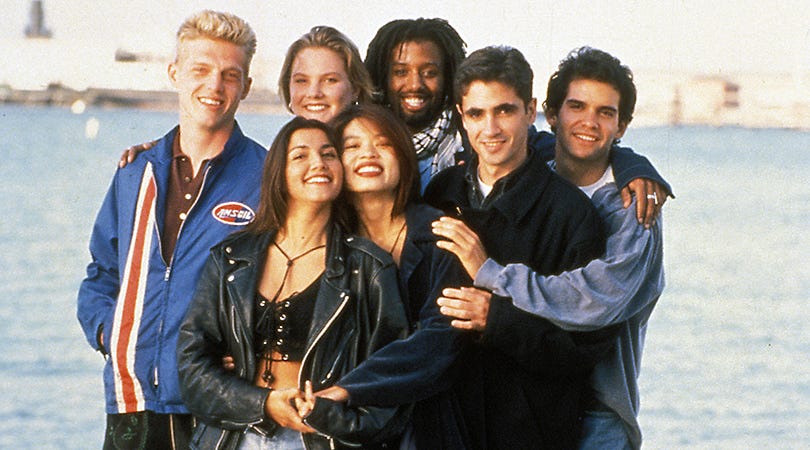
Homophobia on The Real World Helped Me Realize What Kind of Parent I Needed to Be
Pedro surprised me. My family's slurs for him didn't. He was multi-faceted and easy to like. Before Pedro, I wasn't completely sure that being queer wasn't a made-for-TV trope rather than being something real people were. I cared about Pedro. I was furious with Puck Rainey and others who didn't accept him, in their house or mine. When Pedro died from AIDS-related illness, I grieved unexpectedly as a 12-year-old girl who had never wept over the loss of a celebrity before. Keep reading Shannon Dingle on coming to terms with her child's non-binary identity.
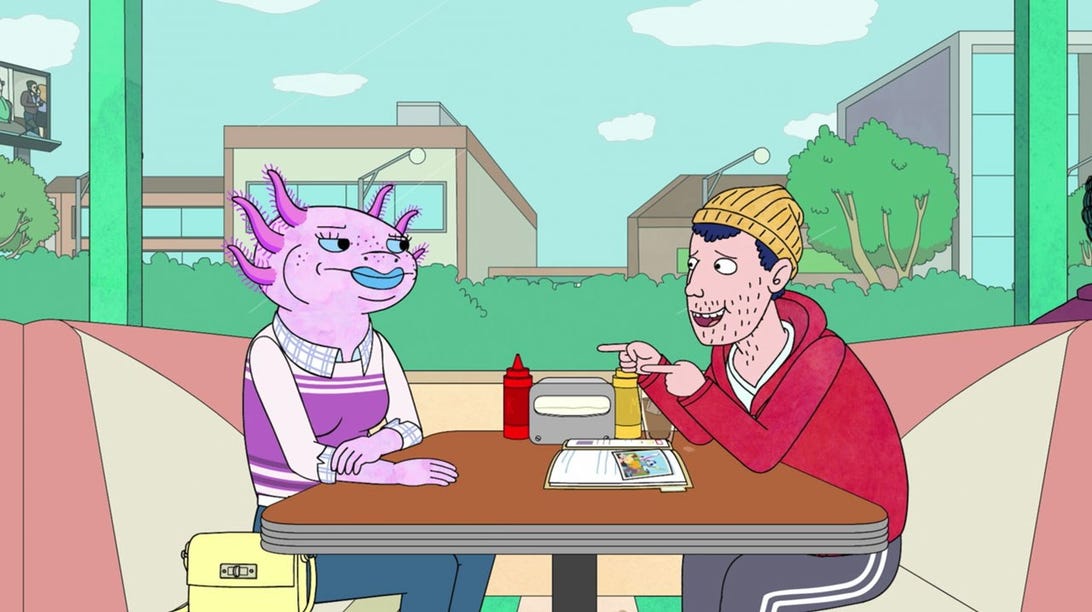
The Trouble With Todd
The moment Todd comes out to Emily is beautiful. Having rekindled their friendship, Emily asks Todd what his deal is. What she thought had been flirtations were clearly not. When Todd replies, "I think I might be nothing", Emily takes it in for a moment and answers with acceptance. "Well, that's okay," she says reassuring Todd, who doesn't quite have the language to describe himself yet. In the very next beat, the audience discovers that Todd signed away his recent windfall from the business he and Emily just sold, to the waitress as a tip in a three second gag. Todd is eight million dollars poorer than he was a minute ago and back to being dead broke with no new prospects (and no couches of former stars to sleep on). The moment after Todd says he's nothing -- a moment that makes him everything to viewers like me -- the show narratively reduces him back to nothing, exactly where he started the series. That's a painful one-two punch; the gravitas of what acceptance feels like served up with a throwaway gag that reminds us Todd is still the butt of the joke. Keep reading Liz Henges on why Bojack Horseman's asexual representation leaves her feeling alienated.
Editors: Krutika Mallikarjuna and Kelly Connolly
Video: Aliza Sessler, Jay Julio, Malcolm Venable, and Lauren Zupkus
Creative: Robert Rodriguez and Sushant Sund
